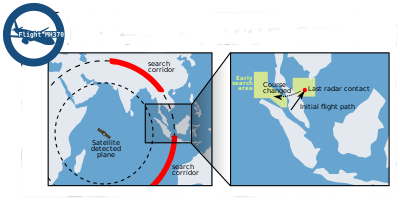Good and Not-So-Good in Satellite Phones

Australia is a large country but most of the population live in concentrated areas, mostly close to the coastline. In those populated areas, mobile telephones work with varying degrees of coverage, depending primarily on the particular network. Telstra is probably the most expensive of the networks but its 3G and 4G mobile phones work in many parts of the country where the other networks are non-functional. But even Telstra 3G and 4G phones do not work everywhere.
I was spending more time travelling in rural and remote parts of Australia and safety was a major concern. I wanted to be able to call for help if I got into any trouble such as an accident or vehicle breakdown. I had considered buying a satellite phone but had heard they were too expensive. However I found a good price for an Inmarsat IsatPhone Pro and was able to purchase pre-pay credits which would help me to limit expenditure. I tested the phone periodically as I didn't want to have an emergency and then find it didn't work. I got my wish as I didn't have to wait for an emergency to find that it didn't work.
It turns out that the phone requires a GPS fix before it can work. Apparently the Inmarsat network has only three satellites, all of which are in geostationary positions above the equator. Phones in Australia must point their antennae northwards to the satellite which hovers over Papua New Guinea. I generally knew which way was north and could point the antenna in that direction, avoiding trees, buildings and other obstacles. But the phone would connect to the network only if it could know my exact position derived from its internal GPS chip.
Frequently the IsatPhone Pro is unable to find satellites in order to get a "fix", and identify my location. Most (non-satellite) mobile phones have GPS chips together with software for navigation, tracking etc. and can tell the user's precise latitude and longitude within half a minute (often less). Even though my 3G phone has no special antenna and is well away from network coverage, its GPS chip can find satellites and tell me my exact location. Unfortunately the Inmarsat IsatPhone Pro can't. And there is no option to manually enter one's position using the information from another source such as one's 3G mobile phone.
On one journey by road from Sydney to South Australia, using back roads rather than highways, I tried every day to get a network connection. I was successful on only one day out of eight. Too bad if there had been an emergency and it wasn't the one day in eight that the phone could work out where it was in order to make a connection to the satellite over Papua New Guinea.
Thankfully there were no emergencies. But there might be on one of my future journeys and the phone was obviously unsuitable for my needs. Cost me about a thousand dollars (cost of handset and pre-pay credits) to find this out, but I avoided much greater costs that might have emerged if I'd had an accident or other emergency and then found the phone didn't work.

The other main satellite network that is accessible in Australia is the Iridium network. Unlike Inmarsat, the Iridium network has multiple satellites rotating the earth in various orbits. If the phone can't find a satellite or, having found one, the satellite passes out of range, another one is usually available. Just as 3G & 4G mobile phones can be used when moving and the call is transferred from one "cell" to the next as one travels along a highway, Iridium phones can transfer connections from one satellite to another as satellites move across the sky, maintaining the continuity of the phone's connection to the network.
I need to be able to call for help if I am in an isolated area and I figured that not only did I need a satellite phone, but I needed one that worked every time I turned it on. I was prepared to try the Iridium network. I looked at different local agents but decided to buy through Telstra (yes, like 3G & 4G mobile phones, they might be a bit more expensive but they do offer service and their phones work as advertised.) I purchased an Iridium Extreme 9575 through the Satphone Shop (www.satphoneshop.com) in Melbourne which is a Telstra agent. The manager was most helpful and I had next-day delivery in Sydney. Even better, after inserting the SIM card, I just turned on the phone and it worked. No special tweaking, no standing around for half an hour or more trying to get a GPS "fix" .. just no problems at all.
The Good and the Not-So-Good in Satellite Phones

Inmarsat Isatphone Pro (left) and the Iridium Extreme 9575 (right)
The good thing about the Inmarsat IsatPhone Pro is that it is cheaper. There is only one not-so-good point - it doesn't work without a GPS "fix" and that means it often doesn't work. This would be a suitable phone for use by persons who have an alternate communications strategy, have enormous patience waiting for the phone to connect to the network (sometimes measured in days) and will not be relying on the IsatPhone in any emergency.
The good thing about the Iridium 9575 is that it works all the time, with no problems. The not-so-good aspect is that it costs a bit more to operate.
If you are purchasing a satellite phone because you want something that works when other phones (including Inmarsat phones) don't, the extra expense for the Iridium phone will be money well spent.
Ivanhoe Harry
Footnote
When Malaysian airlines flight MH370 disappeared without trace in the first months of 2014, there was a lot of publicity for Inmarsat's information leading search and rescue teams to the site of the wreckage. Headlines included "MH370: how Inmarsat homed in on missing Malaysia Airlines' flight" in the Guardian and "How Inmarsat Determined The Route Of Malaysia Airlines Flight MH370" in the World Post.
Years later, the wreckage had not been found in or near the identified location and the search was eventually discontinued.
If aviation authorities and news sources had consulted Ivanhoe Harry, he could have told them about his experience with Inmarsat's systems trying to identify where on this earth their users are located.
This article, whose text is in the public domain, was previously published at www.mumdimundi.com. It has been slightly modified here.
Sources
- This article, whose text is in the public domain, was previously published at mundimundi.com. It has been slightly modified here.
- The image of the man using a phone in the snow by mali maeder from Pexels
- The image of the satellite above the earth is licensed under CC0 - No Rights Reserved. It was obtained from www.1001freedownloads.com
- The photograph is licensed under CC0 - No Rights Reserved. This picture may be freely reproduced. If you wish, you may attribute mundimundi.com as the source.
- The image of the purported flight path of flight MH370 is licensed under CC0 - No Rights Reserved. It was obtained from www.1001freedownloads.com
The three lines symbol at the top of the page permits users to toggle the menu on/off.
